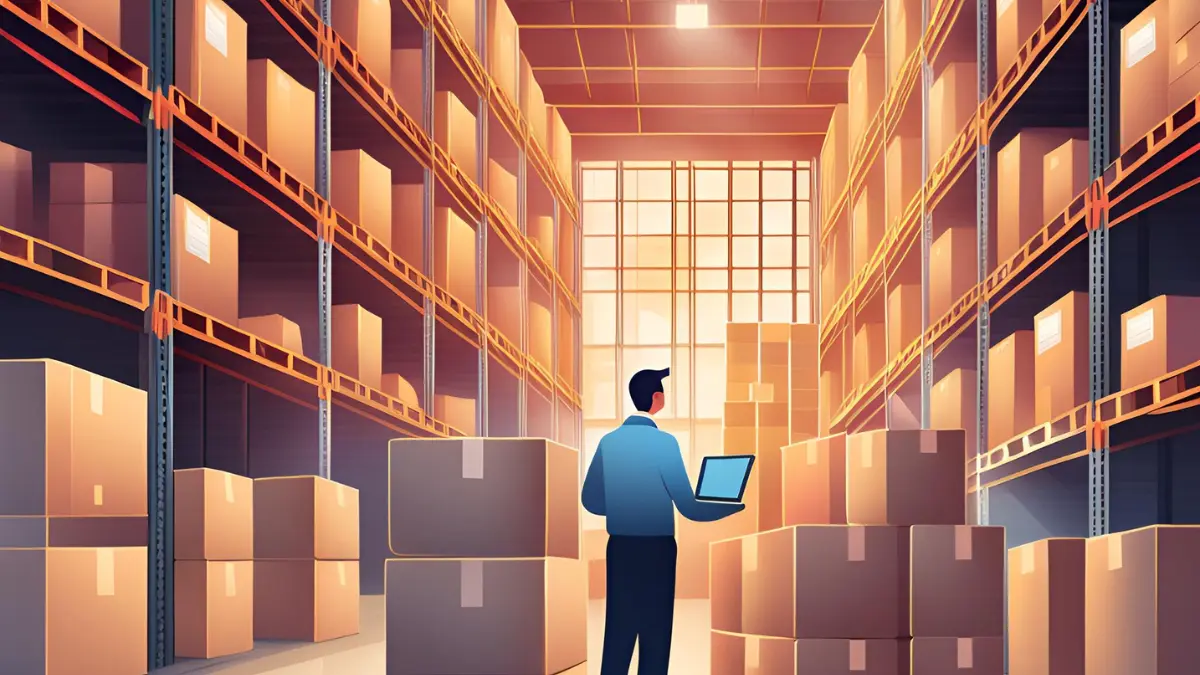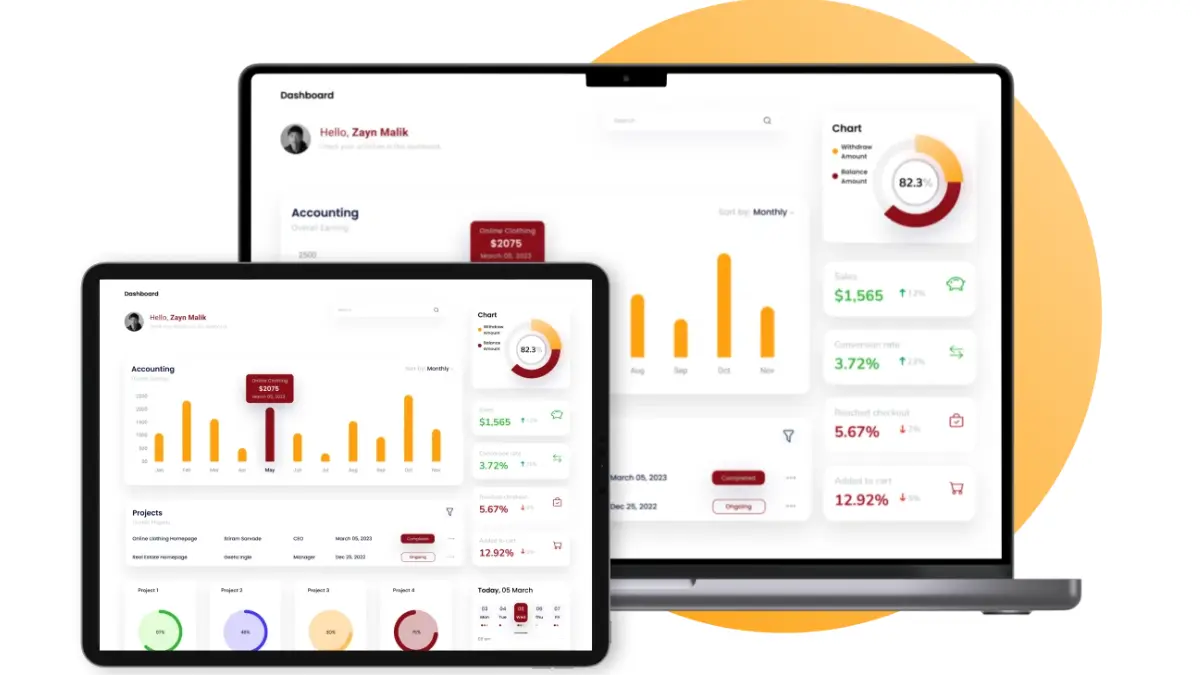Procurement cost refers to the total expenses involved in acquiring goods and services for a business, including everything from the price of the products to shipping, handling, and other related fees. It is a crucial element of a company’s overall budget, influencing both short-term and long-term financial health by impacting profit margins and operational efficiency.
Without the right software, businesses may face significant challenges, such as untracked spending, unapproved purchases, and missed savings opportunities. Additionally, a lack of a clear strategy makes it difficult for organizations to maintain budgets and implement cost-saving measures.
This is where the importance of using the right software becomes evident. According to a recent survey, companies that have integrated intelligent technologies into their operations reported a productivity increase of up to 30%.
This approach highlights how technological innovation boosts productivity, urging businesses to adopt advanced tools to streamline procurement and reduce costs. Explore this article to learn more about procurement costs and discover practical strategies for reducing them in your business.
Table of Content:
Table of Content

Key Takeaways
|
What is Procurement Cost and Why It is Important?
Procurement costs are the fees and additional expenses associated with acquiring the supplies and materials necessary for running your business. These costs, often categorized as indirect spending, can significantly impact your cash flow if not carefully managed.
Understanding procurement costs is crucial because it allows businesses to clearly view their expenditures, essential for evaluating profitability. By accurately tracking these costs, companies can make informed financial decisions that support their overall business goals.
Moreover, recognizing procurement costs helps businesses identify potential opportunities for cost savings. With a clear understanding of how much is being spent, companies can approach suppliers more strategically, often securing better deals that enhance their bottom line.
Additionally, procurement costs play a crucial role in shaping business strategies, and with the help of procurement software, companies can optimize their purchasing decisions, ensuring they obtain the best value without compromising the quality of goods and services.
Different Types of Procurement Cost You Should Know
Understanding the different types of procurement costs is essential for effective financial management and strategic decision-making in any business. Each cost category contributes to the total expense of acquiring goods and services, and being aware of these can help companies identify areas for potential savings.
Below, we’ll explore the critical types of procurement costs that you should consider when managing your procurement process.
1. Base cost: This is the primary expense incurred when purchasing goods or services from a supplier. It represents the initial price paid and forms the foundation for related costs.
2. Transportation cost: These expenses cover the logistics of moving goods from the supplier to your location. Distance, shipping method, and freight charges significantly determine these costs.
3. Closing cost: These are the final expenses of completing a procurement transaction. Closing costs often include inspection fees, certification charges, and any last-minute adjustments needed to finalize the purchase.
4. Taxes and duties: Governments impose these mandatory charges on goods during the procurement ERP process, especially in cross-border transactions. The cost of taxes and duties varies depending on the goods’ type and origin.
5. Negotiation costs: These expenses are incurred when securing favorable terms with suppliers. They might include legal consultations, time spent in negotiations, and any resources used to reach an agreement.
6. Inventory costs: These are the costs of storing and managing inventory after procurement. This includes warehousing fees, insurance, and the expenses of maintaining optimal stock levels.
7. Contract management costs: These ongoing expenses are linked to the administration and oversight of supplier agreements. They include managing renewals, ensuring compliance with contract terms, and handling any adjustments or disputes that arise.
Direct vs. Indirect Procurement Costs
Procurement costs are generally divided into two categories: direct and indirect. Direct procurement costs are those directly tied to the production and sale of goods, such as the cost of raw materials, manufacturing, and transportation. Labor costs for contractors involved in product creation are also considered direct costs.
On the other hand, indirect procurement costs are the expenses necessary for keeping the business operational but are not directly linked to product production. These include office supplies, marketing materials, rent, IT services, employee travel, and capital expenditures.
When managing budgets, companies should differentiate between these two types of costs. Most businesses establish separate budgets and processes for handling direct and indirect procurement costs, ensuring that each category is managed efficiently to support overall financial health.
Understanding the distinction between direct and indirect procurement costs allows businesses to allocate resources more effectively. By doing so, companies can optimize their spending strategies and maintain a balanced approach to production and operational expenses.
5 Ways to Reduce Procurement Costs
Reducing procurement costs is essential for maintaining a healthy bottom line and ensuring long-term business sustainability. By implementing strategic measures, businesses can optimize their procurement processes, minimize waste, and improve overall efficiency.
Here are 5 effective strategies to help your company reduce procurement costs while maintaining quality and supplier relationships.
1. Standardize your procurement process for consistency
Formalizing your procurement process brings consistency and transparency to purchasing decisions. Establishing clear guidelines and standard procedures reduces errors, streamlines operations, and enhances negotiation leverage.
This approach not only lowers procurement fees but also strengthens supplier relationships through clear expectations and reliable communication.
2. Take advantage of economies of scale
By purchasing in larger quantities, your company can take advantage of economies of scale, which reduces the per-unit cost of goods. Consolidating orders and collaborating with key suppliers allows for better pricing and more favorable terms.
This strategy cuts purchasing costs and fosters robust, long-term supplier partnerships, further enhancing cost efficiency.
3. Implement strategic sourcing for optimal value
Strategic sourcing involves thoroughly analyzing your supply chain to identify the most cost-effective suppliers and materials without compromising quality. Prioritizing long-term value over short-term gains secures better deals and stable supply.
This method helps manage risks and adapt to market changes, leading to significant and sustained cost savings in procurement.
4. Focus on cost prevention and expense reduction
Focusing on cost avoidance and savings is essential for controlling procurement fees. Cost avoidance prevents unnecessary expenses before they occur, while cost savings reduce current expenditures.
Implementing both strategies through careful spending analysis and proactive supplier negotiations protects your bottom line while maintaining product and service quality.
5. Leverage technology for more procurement savings
Leveraging advanced procurement technology can significantly lower purchasing costs by streamlining processes and reducing manual errors. Tools like procurement systems and spend analysis software identify cost-saving opportunities and optimize supplier management.
Integrating this technology into your procurement strategy will result in substantial savings and improved operational efficiency. Especially, if you use the right software like the one provided by HashMicro. To find out more, click the banner below!
What are Some Examples of Procurement Costs?
Procurement costs encompass a wide range of expenses businesses incur during purchasing. Understanding these costs is crucial for effective budgeting and cost management. Below are some standard procurement costs that can impact your bottom line:
- Indirect procurement costs: These costs refer to the expenses for goods and services that support daily operations but are not directly tied to producing goods, and cost tracking is essential to monitor these expenditures effectively. Examples include office supplies, maintenance services, and utilities.
- Contract and negotiation fees: These are the expenses for securing favorable terms and agreements with suppliers. They can include legal consultations, negotiation meetings, and other resources to finalize contracts.
- Transportation fees: Transportation fees cover the costs of shipping goods from the supplier to your location. This includes freight charges, shipping insurance, and handling fees.
- Taxes: Taxes are mandatory charges governments impose on purchased goods and services. These costs can vary significantly depending on the jurisdiction and the nature of the goods.
- Customs charges: Customs charges apply to goods imported across borders and include duties, tariffs, and other fees imposed by customs authorities. These costs can significantly affect the total expense of procurement.
- Late fees and finance charges: If payments to suppliers are delayed, businesses may incur late fees or finance charges. These additional costs can add up quickly and impact cash flow.
- Invoice processing fees: Some suppliers charge fees for processing invoices, particularly for small orders or specific payment methods. These fees can accumulate, especially for businesses with high transaction volumes.
- Rush delivery fees: When goods are needed urgently, businesses may opt for expedited shipping, which incurs rush delivery fees. These fees are higher than standard shipping rates and are often used to meet tight deadlines.
- Restocking fees: When returned goods are returned to inventory, restocking fees are charged. These fees cover the costs of handling, inspecting, and restoring the items.
How to Calculate Procurement Cost
Calculating procurement costs involves understanding and summing up various expenses associated with acquiring goods or services. To get an accurate picture of your total procurement costs, you must consider several categories, each contributing to the overall cost.
Below is a breakdown of the critical components of how to calculate procurement cost:
- Direct costs: The clear and direct expenses of acquiring goods or services encompass several vital elements. These include the purchase price of the items, freight and delivery charges, duties and tariffs, and applicable taxes.
- Indirect costs: When calculating procurement costs, it’s important to consider expenses that, although not directly tied to the purchase price, still impact the overall cost. These associated costs include administrative expenses, storage and warehousing fees, quality control, and inspection charges.
- Transactional costs: Several costs are directly associated with the activities required to complete purchases during the procurement process. These include expenses for processing purchase orders, handling invoices and payments, maintaining communication with suppliers, and managing order logistics.
- Compliance costs: Ensuring procurement activities align with relevant laws, regulations, and internal policies often involve additional expenses. These can include fees for regulatory compliance, costs associated with conducting compliance audits, and expenses for training and certifying procurement staff or contractors.
- Operational costs: Operational expenses encompass a range of costs that sustain the procurement function, including investment in IT systems and software, salaries and benefits for procurement staff, and expenses related to training and development. Managing supplier relationships also incurs costs, essential for maintaining an efficient procurement process.
After bringing the data, you can calculate the total procurement cost using a formula like the following:
Total Procurement Cost:
Direct Costs + Indirect Costs + Transactional Costs + Compliance Costs + Operational Costs
By considering these components, procurement and finance leaders can better understand the total procurement cost, ensuring that all relevant factors are included.
HashMicro Provides Solutions for Procurement Cost Management in Businesses
HashMicro is one of the leading ERP software providers in Southeast Asia. It is renowned for helping businesses across various industries successfully manage their procurement costs. With its advanced solutions, HashMicro’s Procurement Management System has empowered companies to optimize spending and achieve greater financial efficiency.
If you’re aiming for similar success, consider exploring HashMicro’s free demo. This opportunity lets you experience firsthand how their software can streamline your procurement processes and reduce costs effectively.
To learn more, take a look at the key features HashMicro provides:
- PO, RFQ & PR Management: This feature allows you to effortlessly create purchase requests, convert them into purchase orders, and send RFQs to suppliers with just a few clicks. By streamlining the procurement process, your business can save time and reduce the chances of errors.
- PR Approval Management: This feature simplifies the process of approving or rejecting purchase requests from various business locations, departments, or employees. With a single click, you can manage approvals directly within the procurement system, ensuring smooth and efficient operations.
- Vendor/Supplier Rating: Using this feature, you can easily rate your vendors through the procurement software. It measures their performance based on product quality, service level, delivery time, pricing, and more, helping you make informed decisions.
- Online Portal for Suppliers: This feature enables vendors to share their catalogs and participate in tenders through an easy-to-use online portal. By simplifying the e-procurement process, you can secure the best offers from your suppliers with minimal effort.
- Blanket Order Management: Implementing this feature allows your procurement system to order goods at agreed-upon prices and times with your suppliers. It ensures consistency and reliability in your purchasing agreements.
- Landed Cost Calculation: This feature clearly shows the total cost of purchasing products, including taxes, shipping, insurance, and currency conversion. The procurement system automatically calculates these costs and helps you manage budgets more effectively.
Beyond these features, HashMicro also offers several additional advantages. The system easily integrates with third-party software, allows for feature customization to meet your specific business needs, and provides an intuitive user interface that’s easy to navigate.
Conclusion
Understanding procurement costs is essential for businesses to maintain financial health and achieve long-term success. By recognizing the various expenses involved in procurement, companies can make informed decisions, identify cost-saving opportunities, and improve overall efficiency. Effectively managing these costs is critical to optimizing resources and ensuring sustainable growth.
One effective solution for streamlining procurement costs is HashMicro’s Procurement Software. Its comprehensive features and customizable options, HashMicro helps businesses reduce expenses and enhance their procurement processes.
Sign up for a free demo today and immediately experience how HashMicro’s solutions can enhance your business operations.

FAQ About Procurement Cost
-
What are examples of procurement costs?
Examples of direct procurement costs include raw materials, manufacturing, transportation, and storage of products, as well as hourly labor costs for contractors. Indirect procurement costs, on the other hand, cover items like office supplies (pens, paper), marketing materials, rent, IT services, employee travel, and larger capital expenses.
-
What is the most common procurement?
1. Direct procurement, involves purchasing raw materials or components directly used in the production of goods or services.
2. Indirect procurement, refers to acquiring goods and services that support the daily operations of a business, like office supplies or utilities.
3. Services procurement, focuses on obtaining professional services such as consulting, maintenance, or legal support.
4. Goods procurement, involves buying physical items or products needed for business operations or resale.
5. Works procurement, includes contracting for construction, maintenance, or infrastructure-related projects.
6. Leasing procurement, is the process of acquiring assets like equipment or property through a lease agreement rather than outright purchase.
7. Emergency procurement, is used to swiftly acquire goods or services in urgent or unforeseen circumstances, often bypassing standard procedures.
8. Digital or e-procurement, uses online platforms or systems to streamline the purchasing process, enhancing transparency and efficiency. -
What is should cost in procurement?
A should-cost analysis calculates the total cost of producing a component, assembly, or product by factoring in efficient manufacturing and distribution practices, as well as current market rates. The costs may fluctuate based on factors like global material price inflation, regional labor rates, manufacturing methods, and the machinery employed.
-
What is procurement vs purchasing?
Purchasing focuses on meeting short-term goals, ensuring that transactions meet the five key criteria: the right quality, quantity, cost, timing, and location. On the other hand, procurement takes a more strategic approach, aiming for long-term objectives that enhance competitive advantage and align with the company’s overall strategy and goals.





































